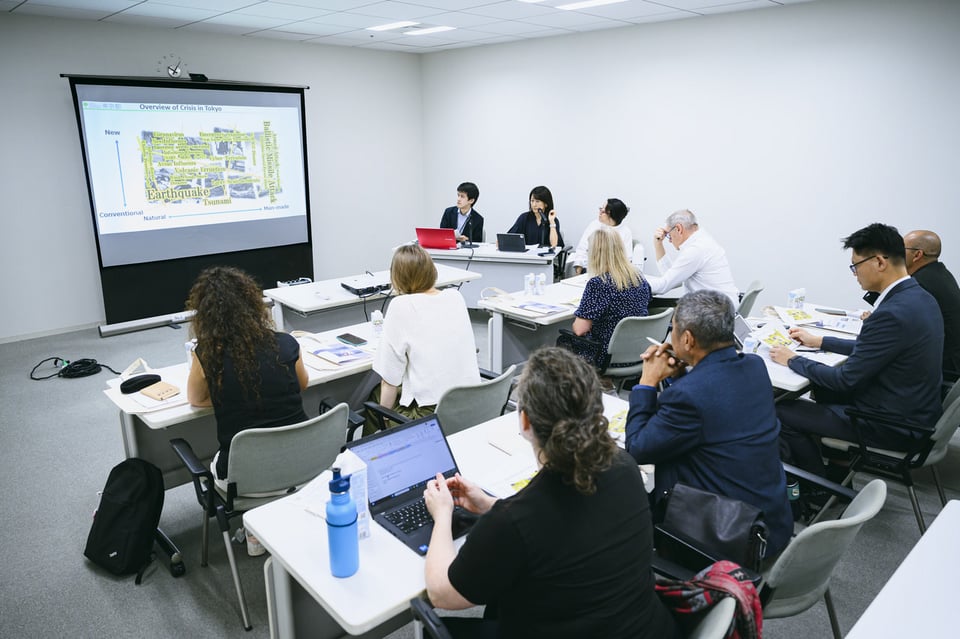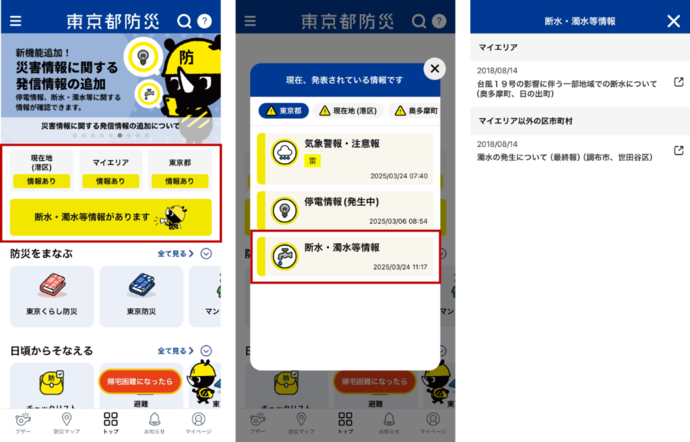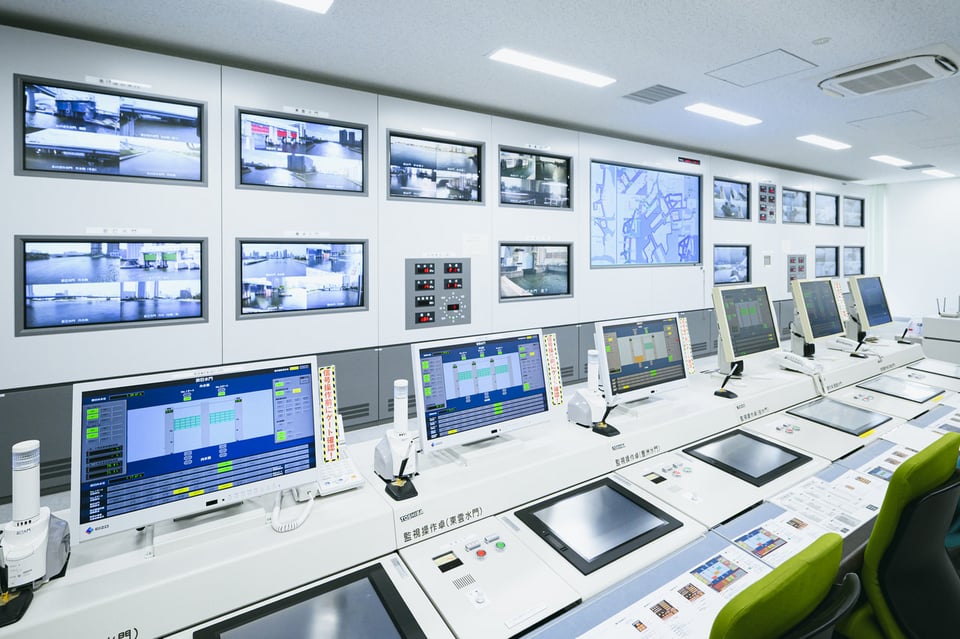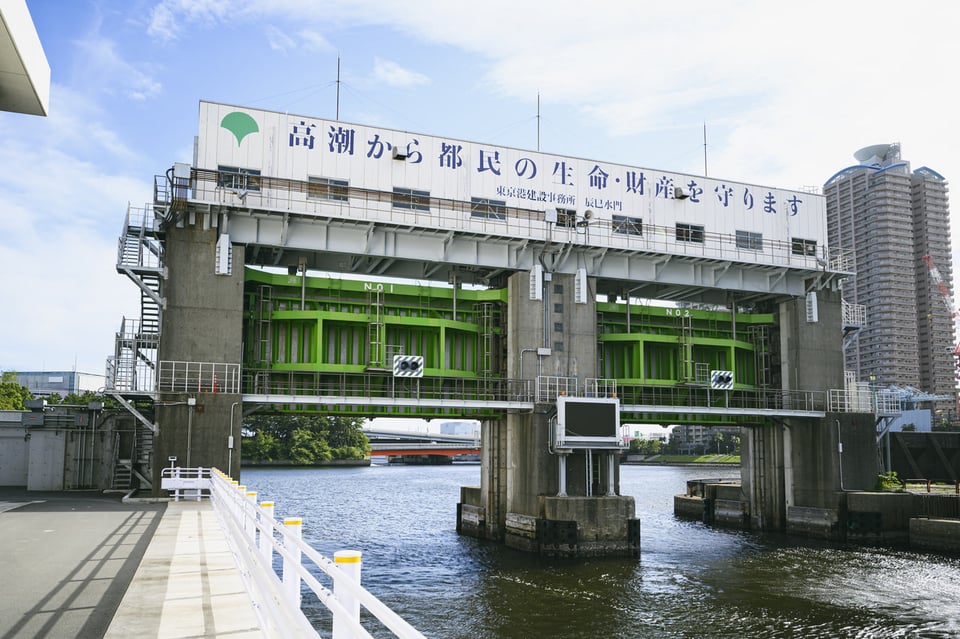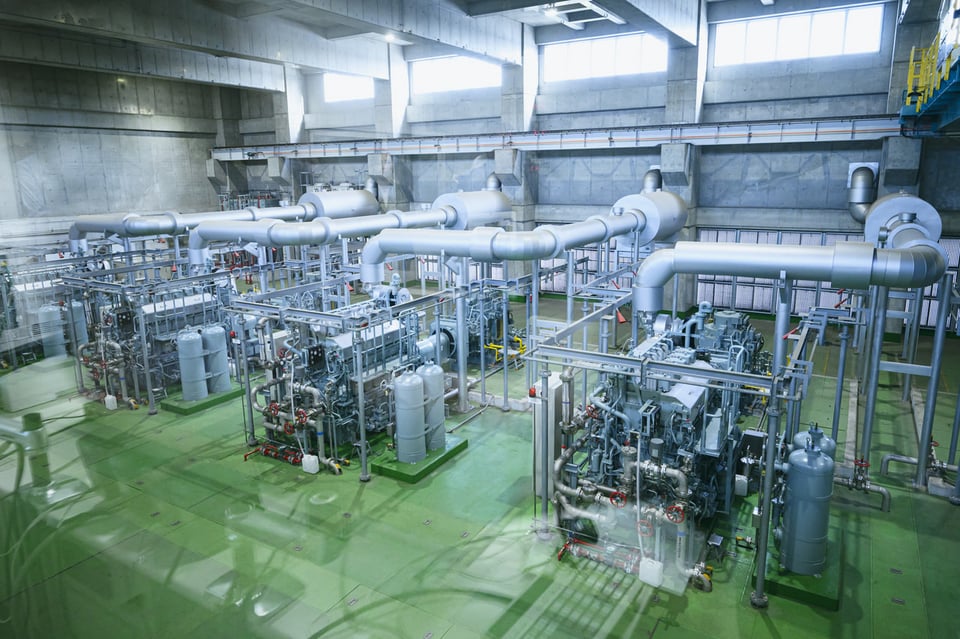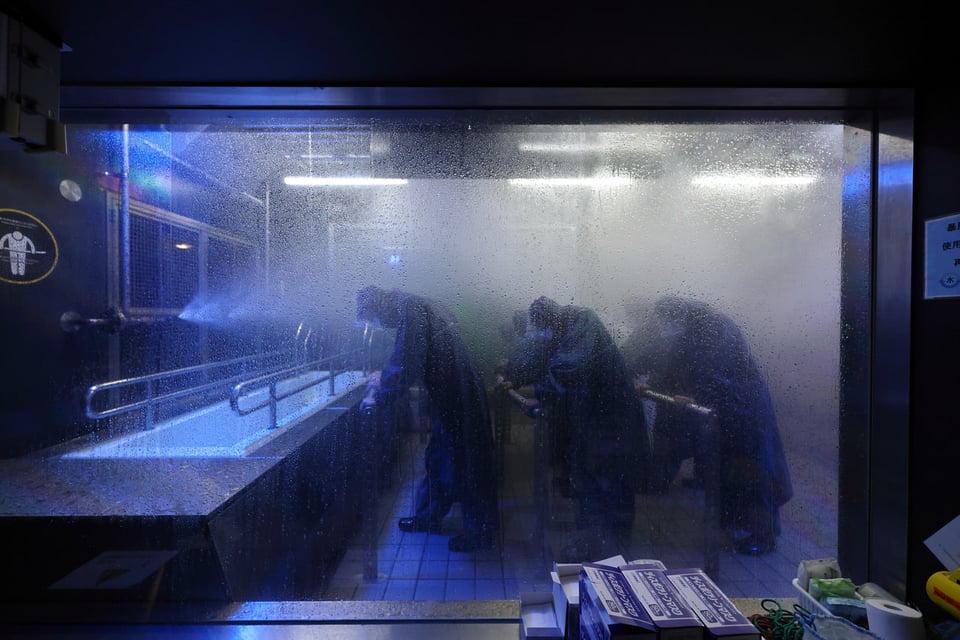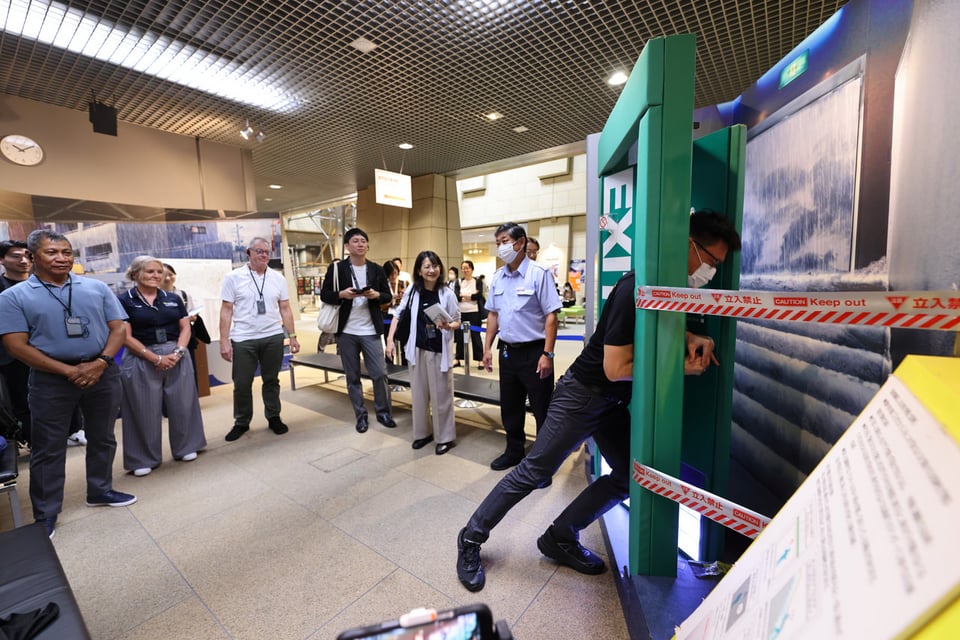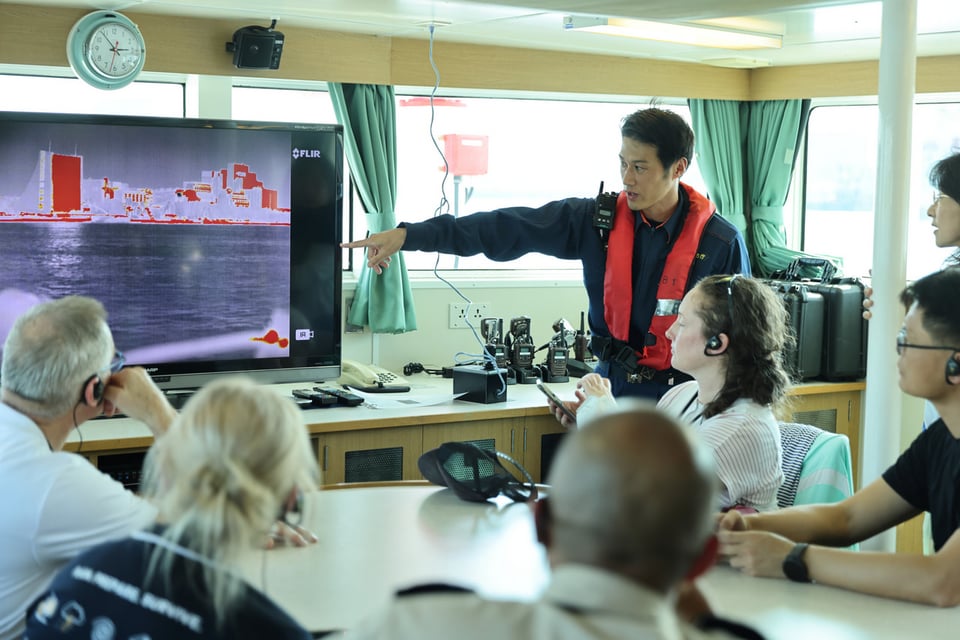
October 28, 2025
Working-Level Staff from 8 Cities Visit Tokyo: Insights into Disaster Prevention Measures in Coastal Areas
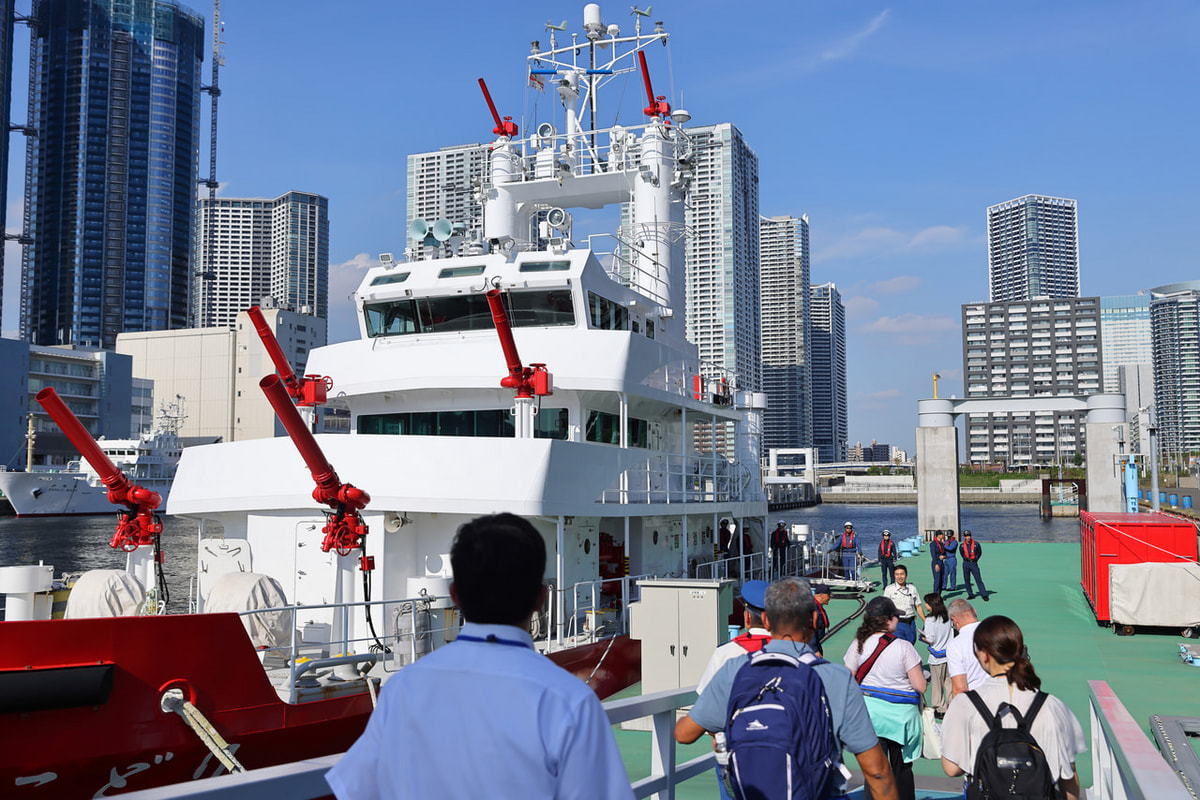
As part of a G-NETS joint project, working-level staff from eight cities took part in a two-day site visit hosted by the Tokyo Metropolitan Government (TMG) from September 25 to 26, 2025, focusing on disaster management in coastal areas. On the first day, participants visited the TMG Bureau of Port and Harbor’s Storm Surge Countermeasure Center and the Tatsumi Pump Station. On the second day, they toured the Honjo Life Safety Learning Center and the Rinko Fire Station, among others, followed by an exchange of views.
Key Site Visits
[September 25, 2025]
・Tokyo Metropolitan Government (TMG)
TMG places high priority on preparedness for intensifying wind and flood hazards as well as major metropolitan earthquakes under the TOKYO Resilience Project: Aiming for “Safety for the Next 100 Years.” At TMG, an official from the Bureau of General Affairs explained initiatives to strengthen citizens’ disaster response capacity, including the use of the TMG Disaster Prevention account on X and the Tokyo Disaster Prevention Information website. They also introduced the Tokyo Disaster Preparedness App, which follows the concepts of “play,” “learn,” and “use” and provides disaster maps and other information useful in emergencies.
・Storm Surge Countermeasure Center
The participants then moved to the Storm Surge Countermeasure Center under the Tokyo Port Construction Office, which manages facilities such as canal floodgates and tide embankments to prevent inundation.
As part of its DX (digital transformation) efforts, the center explained remote opening and closing of floodgates via a fiber-optic communication network, and the introduction of AI-based water-level prediction. Participants asked about the criteria for human judgment in AI predictions.
・Floodgates and Pump Station
Next, the group visited the Tatsumi floodgates and Tatsumi Pump Station, located on the same premises as the Storm Surge Countermeasure Center. They were briefed on safety measures, such as signals installed on the gates and confirmation by camera that no vessel is passing before closure. At the pump station, they observed the pumps used to discharge canal water after gate closure to prevent water levels from rising during rainfall. It was explained that a single pump can drain a 25-meter pool in 15 seconds, and that the facility is equipped with an on-site backup power generator for blackouts.
[September 26, 2025]
・Honjo Life Safety Learning Center
At this citizen disaster education facility run by the Tokyo Fire Department, participants experienced simulated disasters including windstorms, urban flooding, earthquakes, and smoke. In the earthquake simulator, they felt shaking modeled on past Japanese earthquakes, and—following staff guidance—took the protective position until the tremor subsided.
・Rinko Fire Station
At Rinko Fire Station, staff explained maritime firefighting and rescue operations, after which participants boarded one of Japan’s largest fireboats, Miyakodori. The vessel is equipped with six water cannons—two each capable of 15,000 liters per minute, 10,000 liters per minute, and 5,000 liters per minute—enabling a total simultaneous discharge of 60,000 liters per minute. The participants expressed surprise at the scale of the water jets.
・Exchange of Views
After the site tours, an exchange of views was held at TMG. Many participants spoke positively about both the Tokyo Disaster Preparedness App and the Honjo Life Safety Learning Center, with some expressing interest in introducing similar initiatives in their own cities. Noting that wind and flood disasters and earthquake events driven by climate change are affecting cities worldwide, they reaffirmed these as shared challenges across regions. The knowledge sharing gained through this site visit on coastal disaster prevention will contribute to future cooperation among G-NETS member cities.
Participating Cities
Auckland, Catalonia, Davao, Moreton Bay, New Taipei, Toronto, Wellington, Zapopan (Alphabetical Order)
